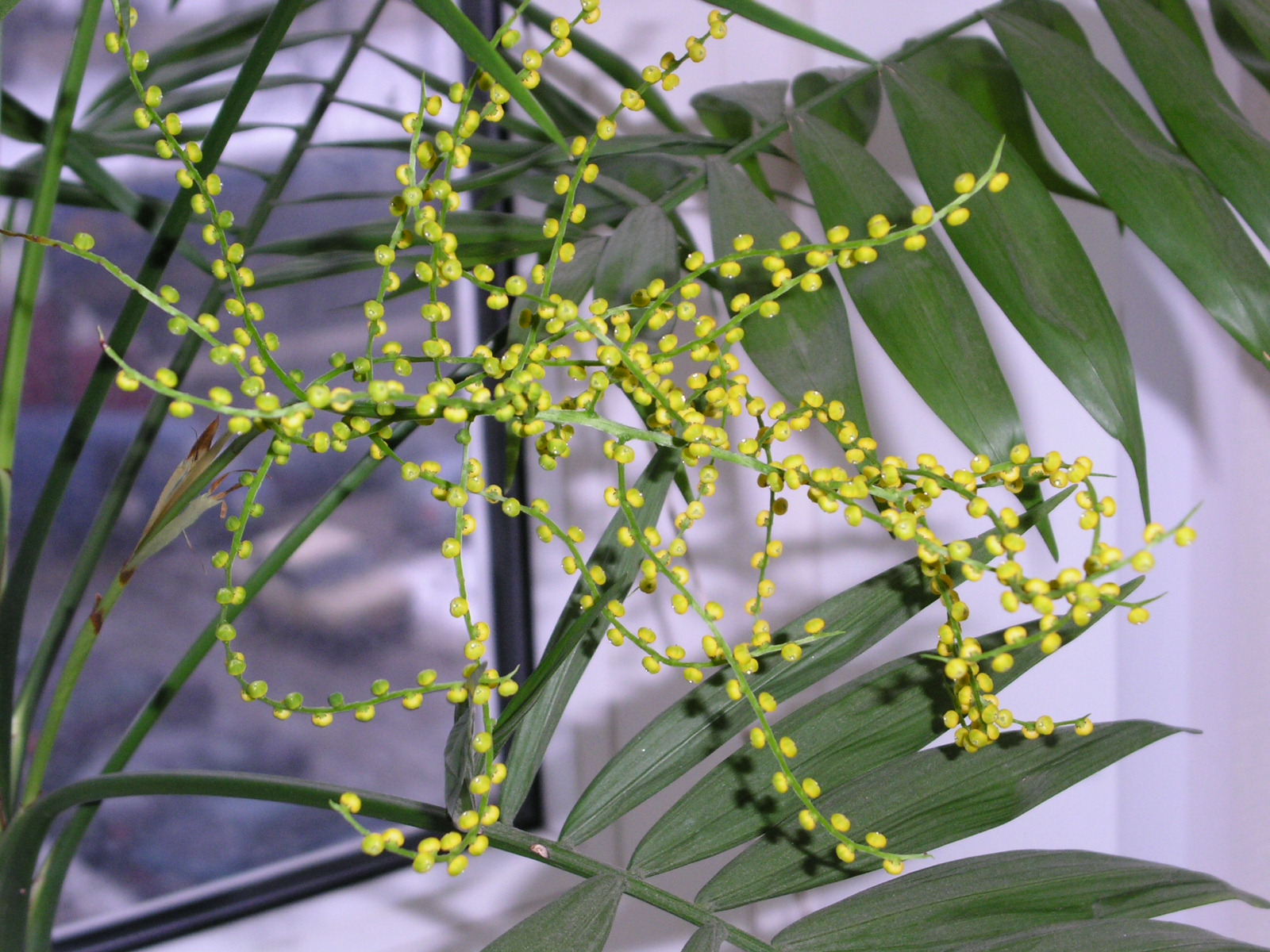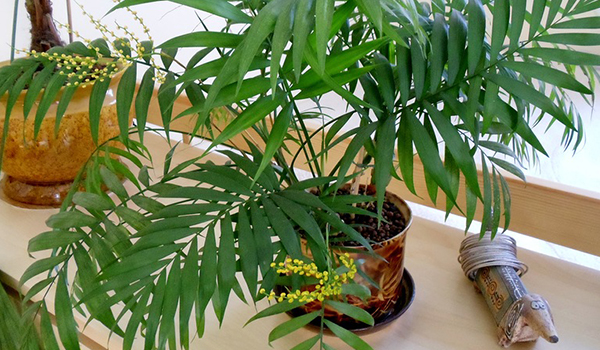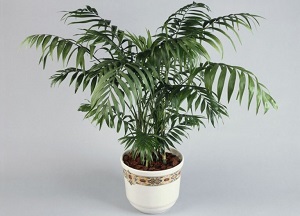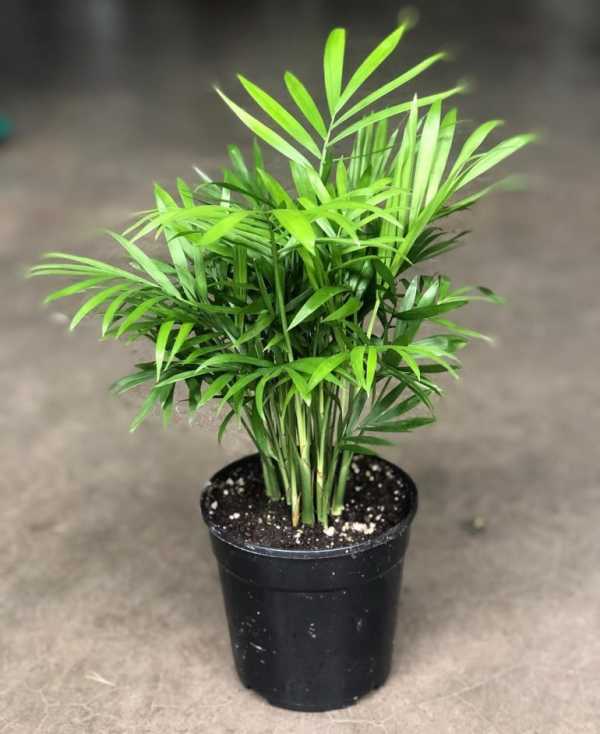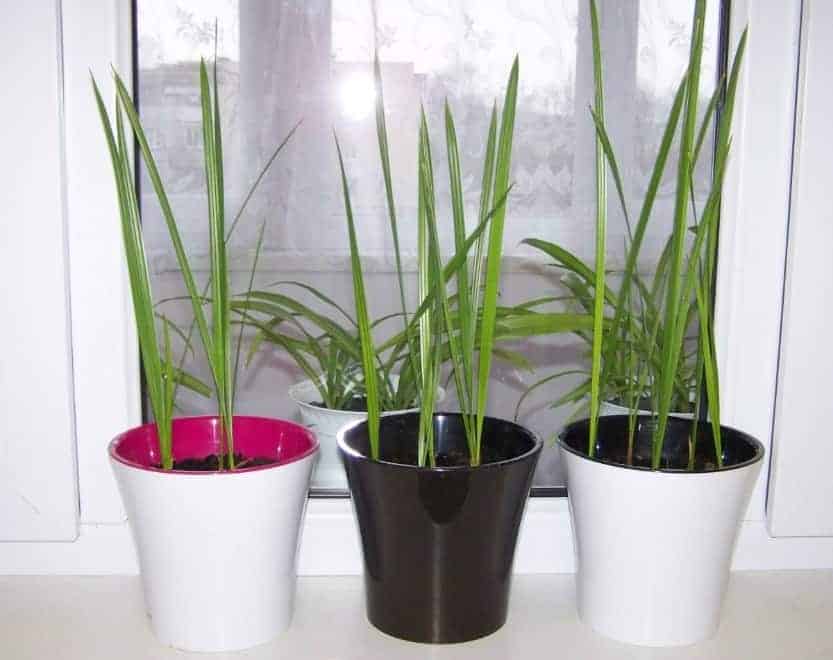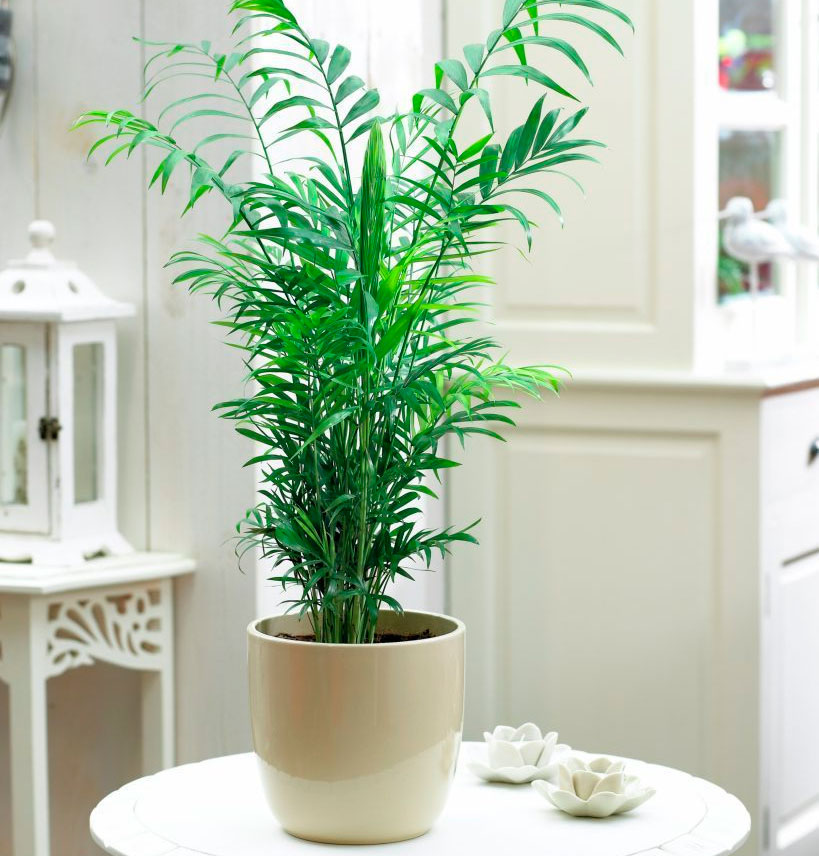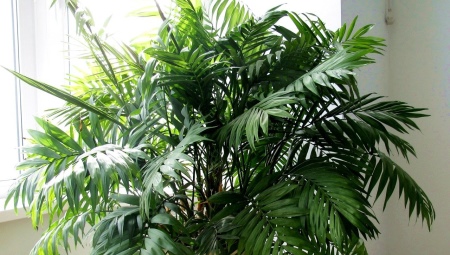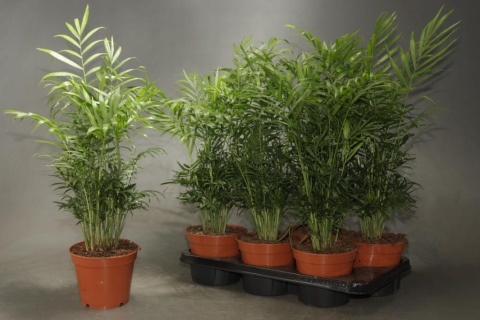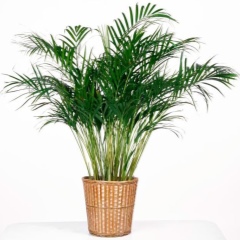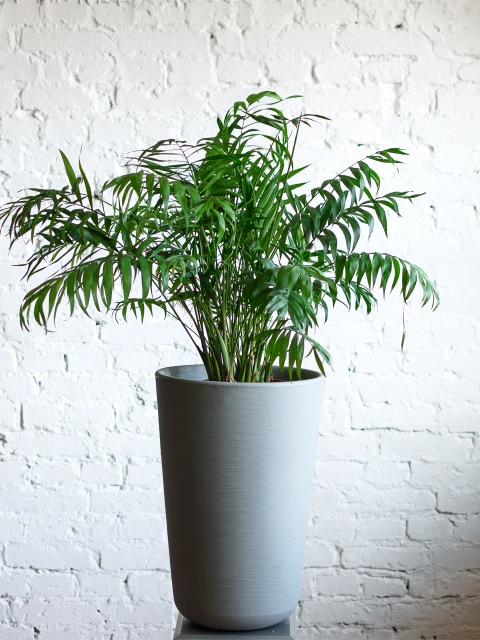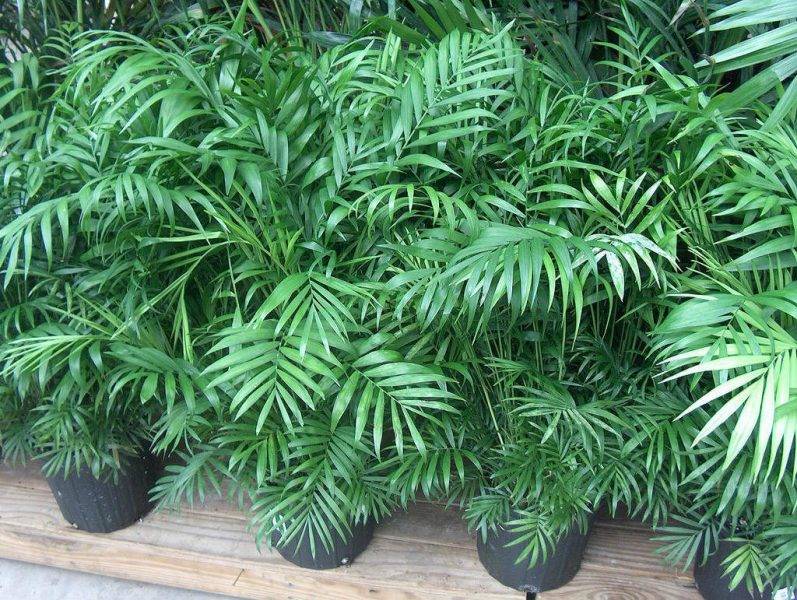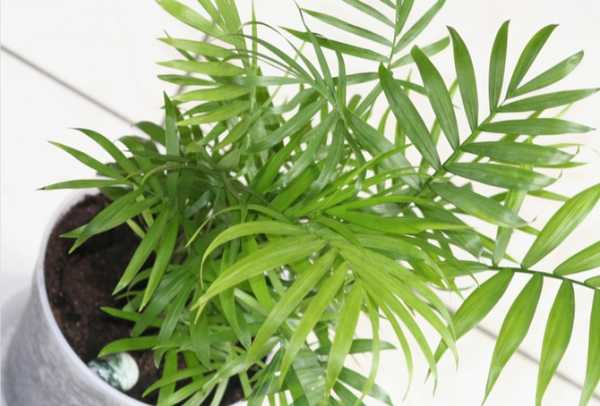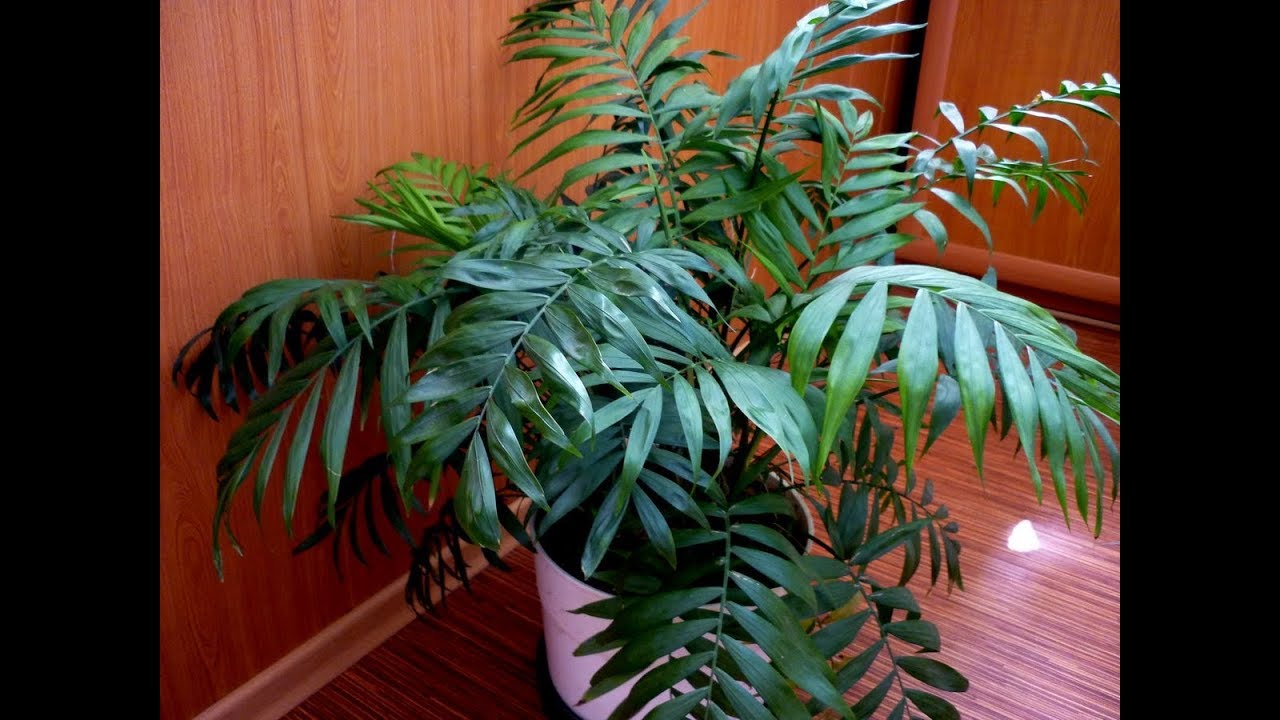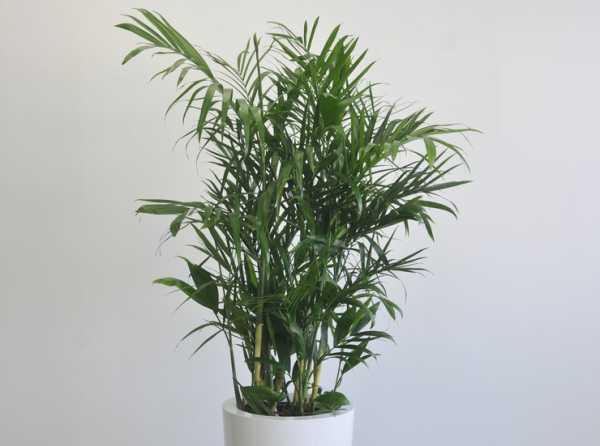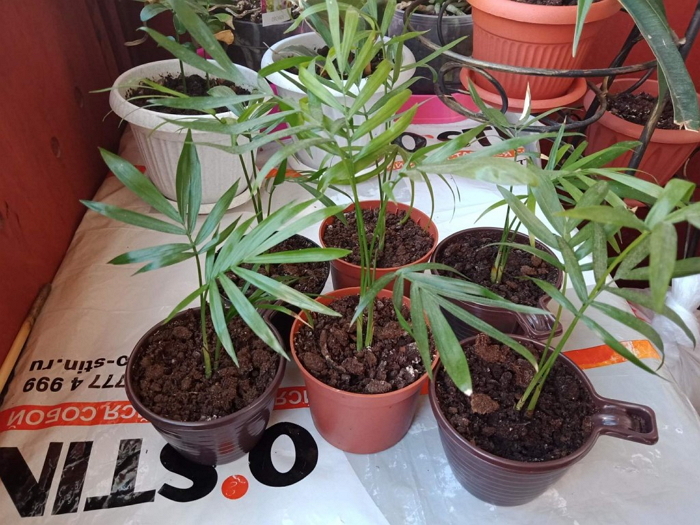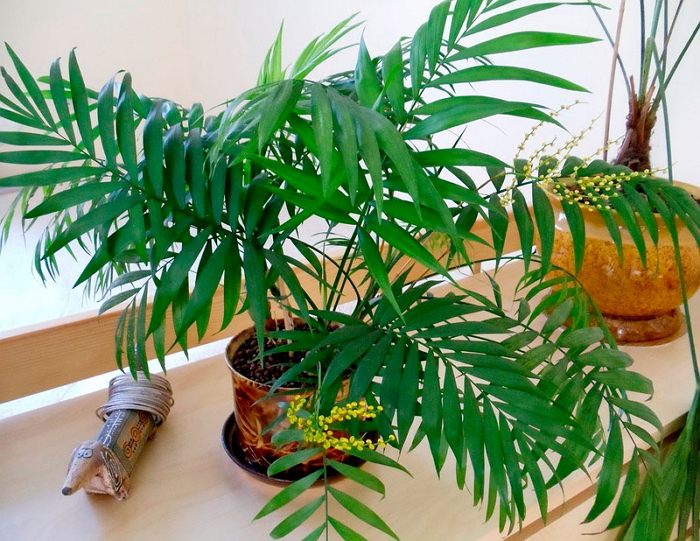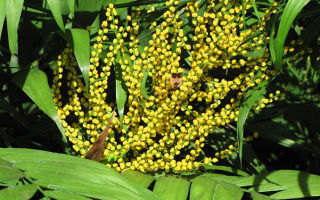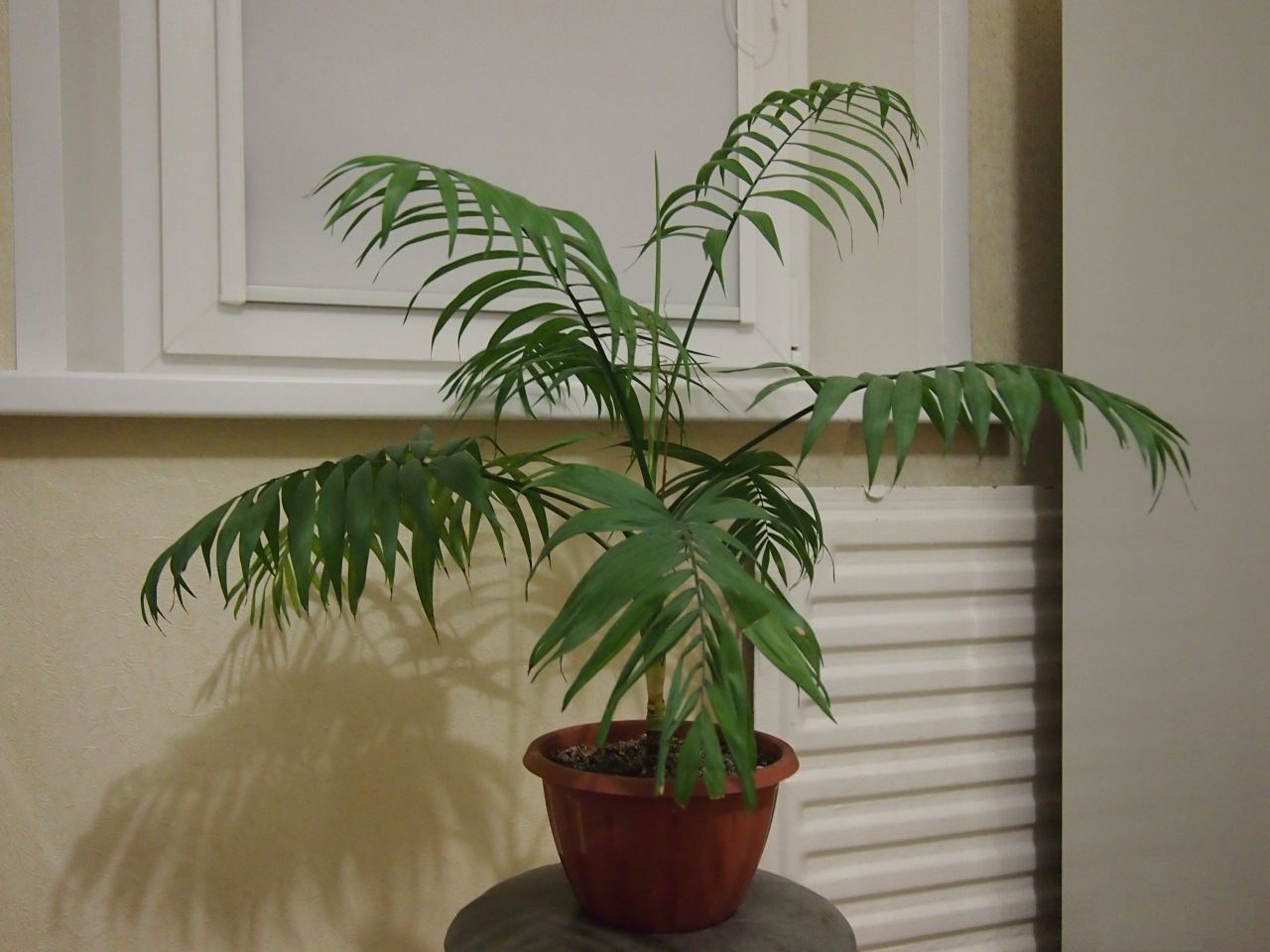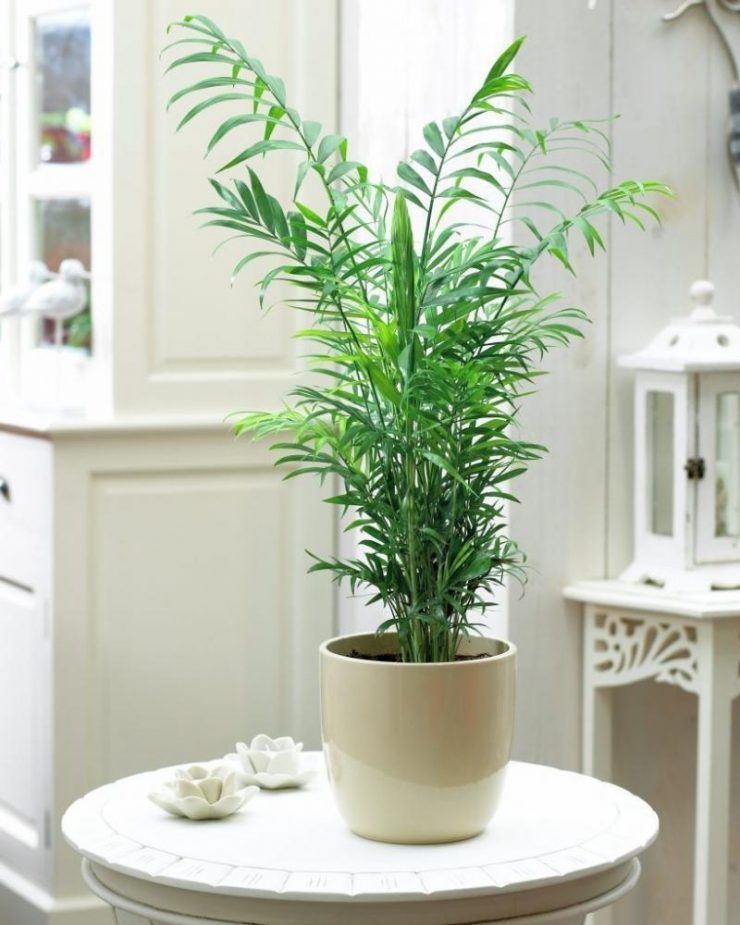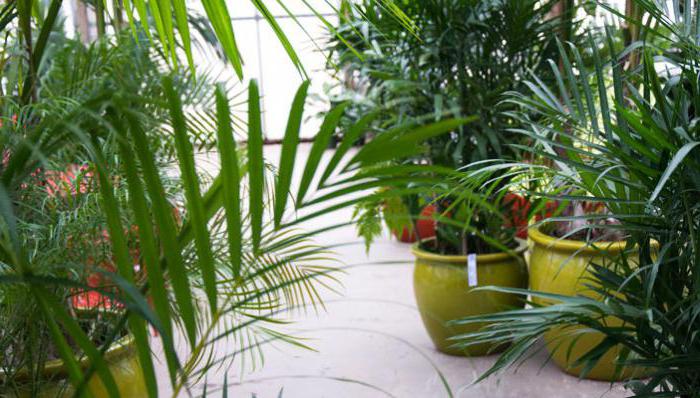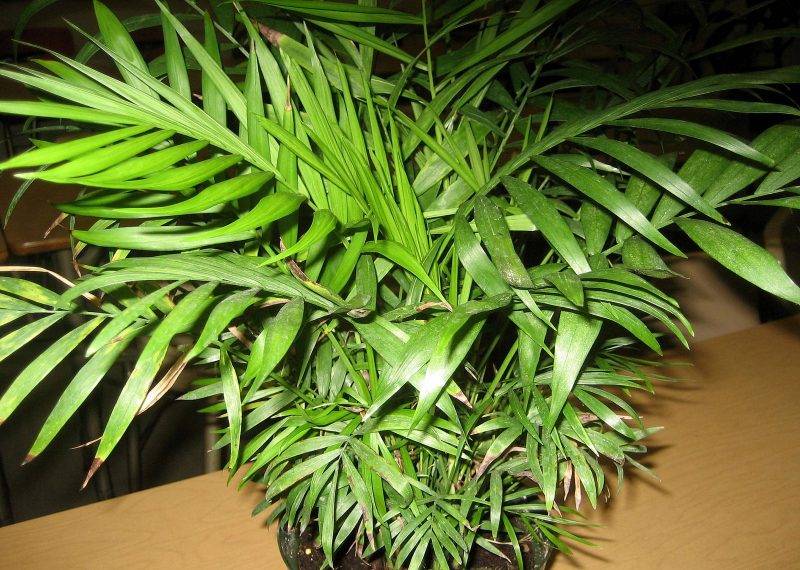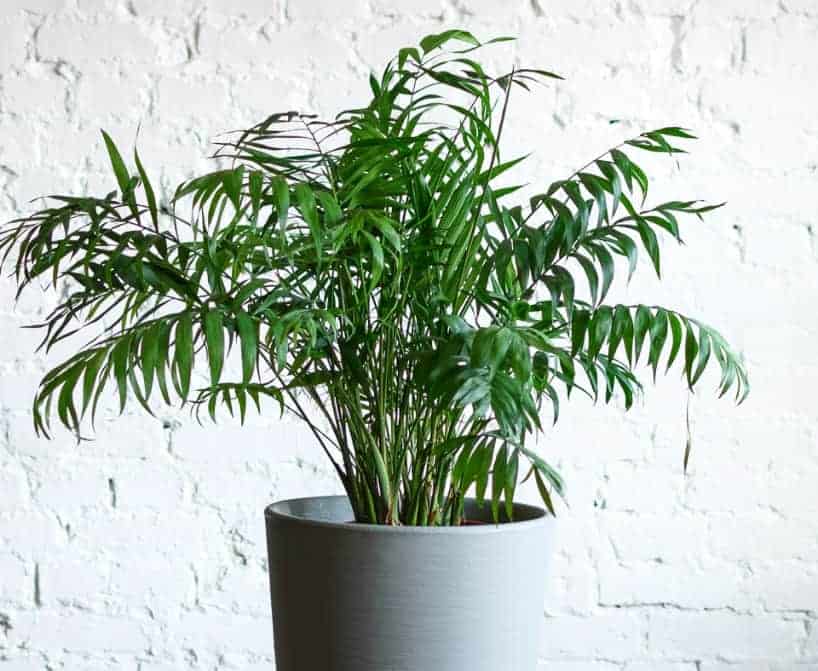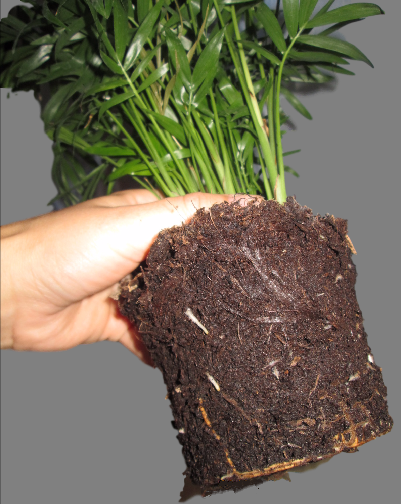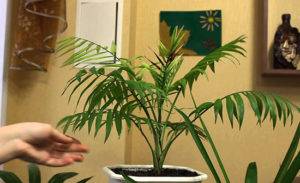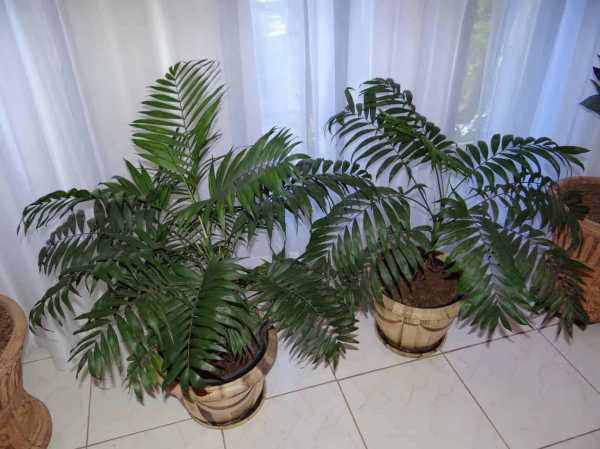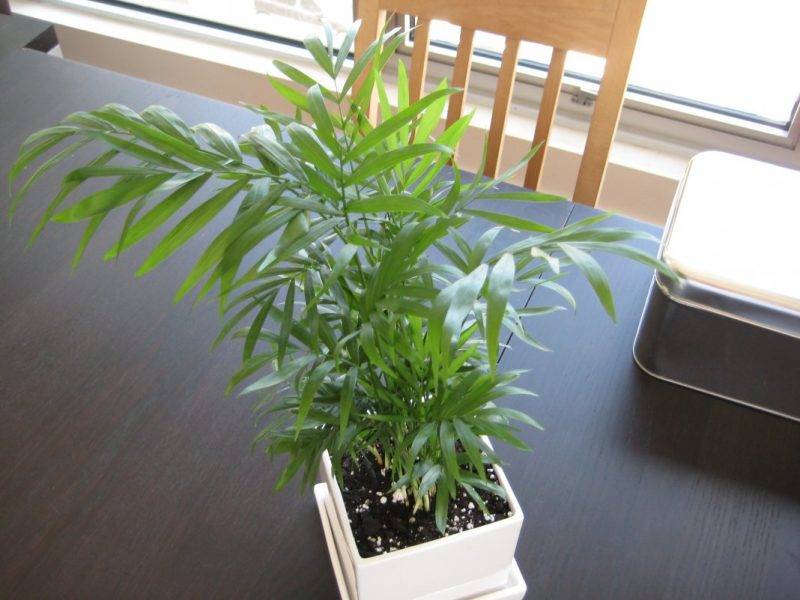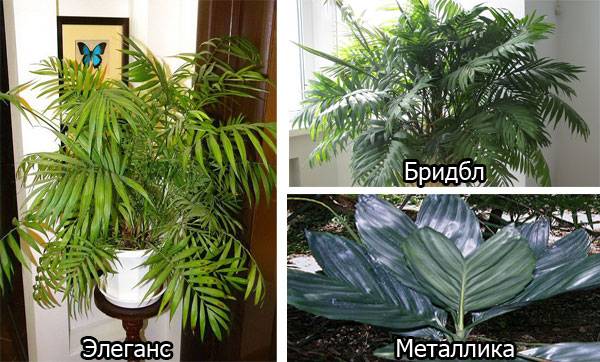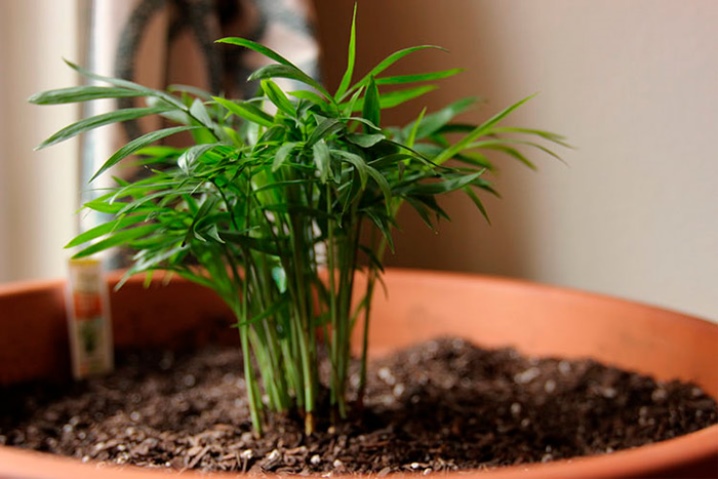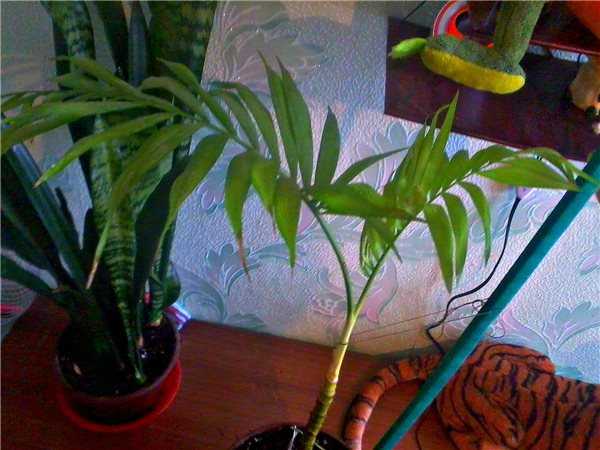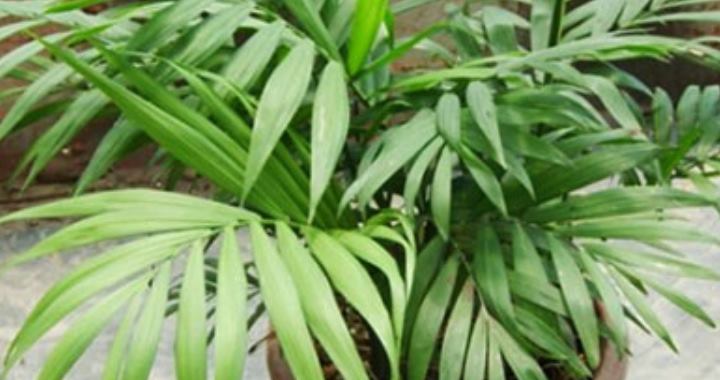Description
Hamedoreya is also called bamboo palm or neanta. It is distinguished by its unpretentiousness and shade tolerance. Hamedorea grows very well at home, without requiring special treatment or expensive care. It grows quickly and looks bright.
The homeland of Hamedorei is the mountainous regions of Mexico and Central America. In their natural habitat, these are not very large, but graceful palms, the height of which can reach 2 m.The thickness of the stem rarely exceeds 3 cm.
The most widespread shrub varieties of the plant in question. However, the species diversity of Hamedorea does not end there. There are attractive vines and plants with only 1 stem.
Plants of different sexes have a striking difference in flowers. In male crops, they grow rich red and yellow, gather in neat inflorescences. In female specimens, flowers are orange or bright red, and are solitary.
Currently, the culture in question has begun to be actively grown at home. Thus, flower growers create a small tropical corner in their own home.
Hamedorea is highly decorative, which attracts the attention of many lovers of wildlife
The plant has oblong leaf plates of regular shapes. At home, chamedorea can grow up to 1.5-2 m in height. A culture can achieve such indicators, even if no action has been taken on the part of the grower. Reaching serious growth values, the plant remains very graceful and attractive. In diameter, palms of this type rarely exceed 60-70 cm.
The plant in question blooms only once a year, while bearing fruit. There is no clear time interval for fruiting. This is due to the fact that in natural conditions for hamedorea, such stages depend on many factors - the amount of precipitation, the value of temperature indicators and many other things.
The flowers are only a few millimeters in size, but they are numerous. It so happens that they grow to several hundred. Some time after flowering, small berries are formed on the trunk, which outwardly resemble sea buckthorn, but only black. They can be eaten.
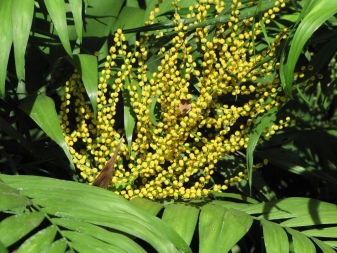
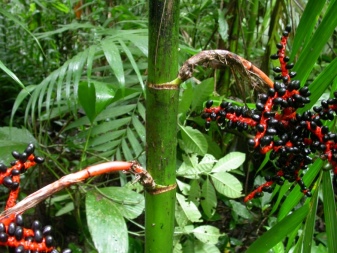
Varieties of hamedorei
As already noted, more than 100 different hamedorei are found in the natural environment, but we will talk about the most popular and common ones:
Graceful
This bamboo palm tree, which grows up to 2 meters in height, has spectacular variegated leaves, and the trunk diameter can reach 3 meters. There are few trunks, each has no more than 10 pairs of leaves. This is a great home option and blooms in captivity, covered with yellow panicles of inflorescences. During fruiting, small black berries form on it.
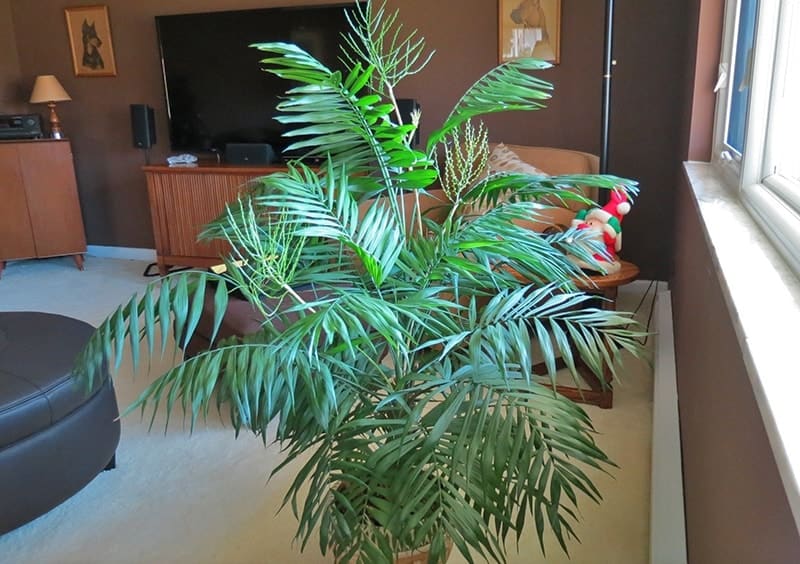
Graceful
High
This is a bushy palm tree, which grows a new trunk every year, in nature reaching 5 meters in height. Outwardly, its trunks are similar to bamboo stems, they are often thin and graceful, with well-visible fallen old leaves.
Each trunk has no more than 6 pinnate, arched leaves, elongated, lanceolate. The flowering of high chamedorea begins with the formation of bright orange buds, from which small flowers appear, forming panicles.

High
Ernest-August
A rare chamedorea, in which root processes are formed in the nodes of a single stem. The main feature of this palm is the integrity of the leaf plates, they are not divided into lobes and have a pointed oval shape.The leaves are painted in a dark green color, at the tip they bifurcate a little. Unlike most Hamedorei, Ernest-Augusta's flowers are bright red.

Ernest-August
Metal
Its leaves are similar in structure to the leaf blade of the palm of the previous variety. They are leathery, widened, and wrinkles often appear on their surface. The trunk of the plant is one, over time it is able to thicken and grow stiff.
The palm tree is low, the height varies from 1 to 2 meters. Unlike most relatives, it feels good in the shade or partial shade. Metallic chamedorea is suitable for growing in low light, for example, indoors with small windows.

Metal
Seyfritz
Another bushy bamboo palm, with many shoots covered with leafy, spreading plates. The most light-loving variety of chamedorea, which is best placed in a bright room with large windows.
Indoor bamboo palm tree can become a real decoration of the interior, you just need to know how to properly care for it.

Seyfritz
Why do hamedorea leaves dry
Despite being undemanding and resistant to adverse environmental factors, a mountain palm can still die at home. Many novice flower growers are surprised why the chamedorea foliage dries up and the plant quickly loses its appearance. Negative changes can be caused by the following reasons:
- improper care ;,
- illness;
- pest attack.
If the leaves of the lower part of the plant turn yellow with proper care, then they must be pruned in time. The cause of the appearance of yellowness can also be factors such as overheating, scorching rays of the sun, excess fertilizing in the soil. Dry tips of the leaves cause concern for the grower, this phenomenon occurs due to dry air in the room, rare watering or stagnation of moisture in the substrate, so errors need to be analyzed and eliminated. Cold causes wilting and darkening of foliage, therefore hypothermia of chamedorrhea should be avoided.
Sometimes the palm tree suffers from fungal infections - late blight, fusarium. They are caused by increased dampness and poor drainage of the soil; treatment includes the use of fungicides. Rarely, chamedorea is attacked by pests, it happens when a person takes a tub with a palm tree out into the fresh air in summer. The leaves of the plant attract spider mites, aphids, and mealybugs. It is easiest to wash off harmful insects with soapy water by carefully rubbing the green parts of the palm tree.
Brief description of cultivation

- Bloom. It is cultivated as a decorative deciduous large-sized plant.
- Illumination. Needs bright sunlight, but in the afternoon, the bush needs to be shaded from direct sunlight.
- Temperature conditions. In the summertime - from 25 to 35 degrees, and in winter - about 15 degrees.
- Watering. The soil mixture in the pot is moistened after its surface dries to a depth of 30 to 40 mm.
- Air humidity. In the cold season, when there are working heating devices in the room, the foliage must be systematically moistened from the sprayer.
- Fertilizer. Areca is fed from April to August once every 15 days, using complex mineral fertilizer for palms. It is also systematically recommended to carry out top dressing on the sheet, using a solution of trace elements for this.
- Rest period. Not pronounced, but in winter the palm grows and develops very slowly.
- Transfer. While the bush is young, it is subjected to this procedure regularly once a year, and more mature plants are transplanted about once every 3 years. Very large and old bushes are not replanted; instead, the top layer of potting soil is replaced every year.
- Reproduction. By dividing the bush and by seed method.
- Harmful insects. Mealybugs, scale insects, spider mites and whiteflies.
- Diseases. Root rot.Areca can lose its decorative effect due to improper care or if suitable conditions for normal growth and development have not been created for it.
Caring for Hamedorea (Neanta) at home
For Hamedorei, it does not really matter where it will be located in the room. Nevertheless, it must be borne in mind that Neanta, like any plant, loves good lighting, but is afraid of direct sunlight, which can harm the leaf plates.
Hamedorea grows well in the shade, and therefore a palm tree can be placed near a north-facing window. Also, the plant can be grown next to the west or east window.
Temperature regime
Although Hamedorea is a non-capricious plant, it makes special demands on the air temperature in the room. During the period of active growth of the palm, it is necessary to provide a temperature regime in the range from + 16 ° С to + 23 ° С. In winter, the room temperature should be + 15 ° C ... + 18 ° C. It is unacceptable for the temperature to drop below + 12 ° С, as well as a sharp temperature drop.
In the warm season, Hamedorea can be taken out into the fresh air, for example, on the balcony or in the garden, by placing the pot in the shade of the trees. Protect from cold drafts.
Watering
In the spring and summer, the palm should be watered sparingly and regularly. For irrigation, settled water is used. The volume of water depends on the room temperature. In summer, Neanta is watered 2-3 times a week. In winter, the amount of watering is reduced. If the room is hot, more water is required than in a cool room. The best option is once a week.
You can also use the drip tray method. In this case, the pot is placed in a bowl of water for about 15 minutes, then let the water drain out and put on a pallet.
It is important that the root system of the palm tree does not become waterlogged or dry out. Improper watering can harm the plant
 Hamedorea Elegance
Hamedorea Elegance
Moisture degree
In the warm season (spring-summer), Hamedorea needs high air humidity. In dry air, the tips of the leaf blades may begin to dry out on the palm. It can also cause spider mites to appear on the plant. During this period, it is necessary to spray the palm tree. In addition, you should wipe the leaves of Neanta with a wet cloth. This procedure will not only moisturize them, but it will also be possible to get rid of the dust that has appeared on the leaves.
In winter, especially if the pot is located in a cool room, the humidity should be slightly lower.
Top dressing
If the plant was recently transplanted, it is not recommended to feed it, as it grows slowly and does not need fertilization throughout the year.
Adult specimens need feeding. During the period of active growth, fertilizers are applied once every 15-20 days, in winter - once a month. As a top dressing, you can use a complex fertilizer designed for growing palm trees.
Breeding features of Hamedorea
Hamedorea can be propagated vegetatively by disconnecting root suckers with several roots and planting them in a new container, as well as with seeds that can be obtained at home by manually dusting the flowers. This is done as follows: a soft brush is taken, with its help, the pollen from the male flowers is transferred to the female ones.
Seeds must be sown in spring. For crops to germinate, they need to provide a high temperature - about + 25 ° C ... + 27 ° C, a constantly moist substrate. If these rules are followed, the first shoots will appear in about 1-1.5 months.
When the seedlings form 1 leaf, they can be planted in separate pots with a diameter of 7-8 cm.
Problems Possible When Growing Neanta
Problems can arise with improper care, unfavorable conditions.
- the leaf blades began to dry - the reason may lie in the dry air in the room and at the same time weak watering.First, the tips of the leaves begin to turn yellow, gradually passing to the entire leaf plate. But if only the lower leaves turn yellow and fall off, you should not worry, since this is a normal process.
- drying is observed not only of old leaves, but also of young ones - a sign of root rot. This can happen if the soil has been overfilled after transplanting.
- leaf blades began to become covered with brown spots - this can happen with a sharp change in temperature. A draft may also be the cause. The plant must be rearranged to a different location.
- in the spring there is no growth of new leaves - a sign of a lack of fertilizer.
Pests
Under unfavorable conditions, for example, in hot and dry air, spider mites and scale insects can settle on Hamedorea (Neanta), although it shows high resistance to diseases and pests. Treating a palm tree with an insecticidal solution called Actellic will help get rid of these pests.
General description of the plant
Fruit - in chamedorea, this is a pea-sized berry, yellow in color. Usually, at home, the palm tree blooms, but does not bear fruit, most likely this is due to its dioeciousness - on some specimens the flowers are female, on others - male.
Flowers - they are often compared to mimosa, they are of a reddish-yellow hue, form a loose panicle. Only women have a scent. It is recommended to remove inflorescences from young palms, since the flowering process only depletes the fragile palm.
It forms a single lump. The roots try to penetrate deeper into the ground and occupy a rather large area.
In this plant, they are feathery in the upper part, and in some varieties they are pointed like "lancets". In the bush-shaped chamedorea, they are narrow-lanceolate, with a pointed edge, and grow along the trunk. In the trunk palm, they often gather at the top. By paint, the leaves are bright green, up to 30 cm long.
There are species of bamboo palm with several trunks, but there are also single ones. In the latter case, it acts as the only point of growth, so it cannot be pruned. When the plant reaches its maximum height and rests against the ceiling, they get rid of it.

How to propagate?
Chamedorea can be propagated in two ways:
- division (vegetative method);
- seeds.
Both methods can hardly be called simple, but with the proper skill, everything should work out successfully.
Split transplant
Reproduction by division does not give one hundred percent guarantees that the new plant will take root. Fission is a big stress for the palm tree. So keep this in mind before proceeding.
- Free the plant from the soil, remove soil from the root system, rinse the bush.
- Take a close look at the roots of the palm tree. If there are damaged or diseased elements, then they must be removed. Treat all cuts with charcoal.
- Divide the bush into several branches. Each process should have its own root system.
- Plant 4-5 such processes in planting containers.
- After planting, all that remains is to carry out standard plant care.
To keep transplant stress to a minimum, maintain a higher room temperature (about +30 degrees) and a high humidity level (about 80-85%). You need to spray the leaves of seedlings three times a day. Seating in separate containers should be carried out after 6-8 months.
Seed propagation
It is generally accepted that it is almost impossible to get chamedorea seeds at home, since the grower will need plants of both sexes, which will have to pollinate themselves. So it is better to immediately buy ready-made seeds in the store.
Seed reproduction:
- Before planting, soak the seed in warm water (about +30 degrees) for 7 days. You can add the drug Zircon to the water, it will stimulate the speedy germination of seeds.
- Then the seeds will need to be scarified (cut into the skin).Such seeds should be laid with an incision down.
- You can choose a sandy-peat substrate for planting. Deepen the seeds into it by 10 mm no more.
- Place a bag on the planting container or pull over the fabric to achieve 100% moisture over the plantings.
- The room temperature should be kept within + 30 ... + 32 degrees.
- Every day you need to arrange ventilation for several hours.
Chamedorea seeds can rest in the ground for 6 months or longer. Only a third of all landings will ascend.
When the seedling grows to 40 mm and at least 1 leaf is formed on it, then you can transplant it into a separate bowl.
7 rules for growing palm plants indoors
The successful cultivation of palm plants is associated with the observance of several simple rules:
- Match the lighting to the individual requirements of the species. Place light-loving palms closer to the light source, and shade-tolerant ones protect from excessively intense sunlight.
- Do not drive plants with stimulants. Most indoor palms have low growth rates, and you do not need to try to speed it up with hormones. Overstimulation adversely affects plant health.
- Provide the plant with sufficient soil. Palms can sit in one pot for quite a long time, but when their roots fully colonize the earthy clod, vegetative growth is inhibited. Transplanting young specimens should be done more often, once every 2-3 years. Adult large-sized plants - less often, once every 5 years.
- Plant palms in a drained substrate. Like any tropical plant, palm trees like to feel constant moisture in the root zone. However, waterlogging and soil compaction can lead to the development of fungal diseases of the roots and trunk. Therefore, the soil should be as loose and breathable as possible, but at the same time moisture-absorbing.
- Maintain a moderately warm temperature. Palm trees are well suited to the usual room temperature in the range of + 22-25C. Sharp fluctuations are undesirable. If the heat of + 30C, with sufficient moisture, the palms tolerate normally, then a sharp cold snap below + 8C will become a serious stress for them.
- Give plants timely feeding. The limited volume of soil is quickly depleted, so the supply of mineral compounds in the substrate needs to be replenished.
- Do not let the soil dry out. Palm trees are moisture-loving plants and react sharply negatively to drought, dropping the leaves down. In most cases, these leaves do not restore their previous appearance.
Treelike species of palm plants have one growth point located in the apical (apical) zone of the trunk. They cannot branch and, if the growth point is damaged, they die.
Therefore, one more important rule - when growing tree palms, you need to be very careful about the apical zone of the plant.
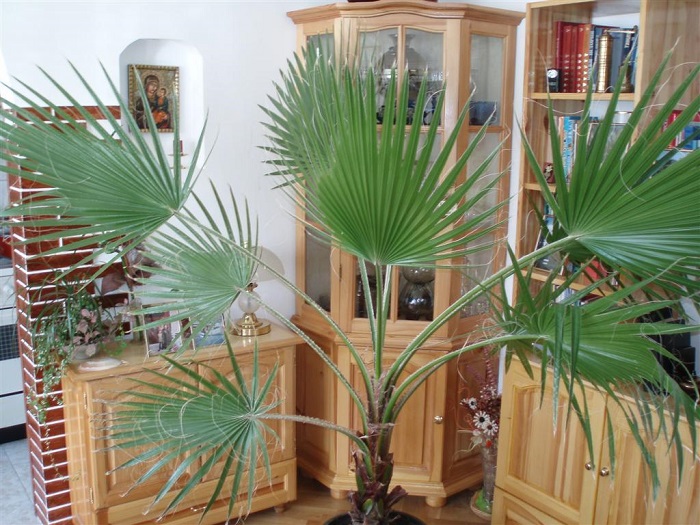 The apical bud is figuratively called the "heart of the palm". It is hidden deep in the crown, in a special recess in the trunk, which protects it from mechanical injury and drying out.
The apical bud is figuratively called the "heart of the palm". It is hidden deep in the crown, in a special recess in the trunk, which protects it from mechanical injury and drying out.
Breeding methods of hamedorea
Sometimes flower growers want to propagate a domestic palm tree, this can be done in several ways. Each of them will help you acquire new plant specimens.
Dividing an adult plant
It is recommended to combine this method of propagation with the transplantation of an adult plant; it is best to do the division of the palm tree in late spring. Rinse the roots of the specimen taken from the pot under a stream of warm water, then divide the chamedorea into several separate bushes and transplant them into individual containers.
Caring for young palms provides for their temporary shading and moderate watering, but it will be possible to feed the plants only after 3 months.
Basal processes
Separate the basal shoots carefully from the adult plant after the roots have formed. Plant the shoots in prepared pots with a moist rooting substrate.
It is best to do this in the warm season, so it will be easier for young plants to take root.

Many growers remove the inflorescences that have appeared in the form of bristles.
Seeds
The seed method of propagation of a mountain palm tree is suitable only for experienced flower growers, since sometimes it takes a very long time to wait for shoots. You need to sow recently harvested seeds, every month their quality decreases by 10%. Shortly before planting, the selected material is soaked in warm water for 5 days, after which the upper shell of the seeds is removed. Then they are planted in containers, deepening the grains into the substrate by 1 cm, and the air temperature during this period should vary from 22 to 25 ° C.
In order to retain heat and moisture, it is recommended to create a greenhouse and maintain favorable conditions in it. Ventilate the room daily, otherwise mold may develop under the film. The germination period of seeds depends on their quality and ambient temperature, but sometimes sprouts appear after 2 or more months. When the first leaf of the seedling reaches 4 cm in length, it is transplanted into an individual pot with prepared soil.
Few connoisseurs of indoor plants manage to propagate a palm tree with the help of seeds, but with successful germination of planting material, it is not difficult to care for young chamedorea. They can be transplanted into larger containers without any problems due to their good survival rate.

Caring for young palms includes temporary shade and moderate watering.
How to care for chamedorea at home
The homeland of Hamedorea is the humid forests of Guatemala and Mexico. It grows freely in the shade of other trees, which explains the good tolerance of shaded rooms.
Hamedorea can be described as follows:
- Stems are solitary, numerous, less often lianas;
- Leaves - whole, feathery or forked towards the top. 1-2 full leaves grow in a year; leaves are open in the crown;
- Flowers - in the form of panicles or spikelets, small. It is a dioecious plant with fragrant female and male flowers;
- The fruit is a small pea-sized berry.
Maximum height up to 2 meters.
Watering
In cold and warm periods, the watering regime for the flower is different. In summer it is more abundant. Overdrying the earth coma is unacceptable. Spraying is daily. Wipe - if necessary.
In winter, watering is not plentiful. Spraying is stopped altogether, the leaves are wiped as needed.
The plant withstands irregular watering well.
Favorable lighting conditions
The main thing is not to put the palm tree under the scorching sun rays. The flower perfectly tolerates low-light rooms (north side). For hamedorea, the most comfortable rooms are those located to the west and east.
Providing temperature control
Palm crops prefer temperatures between 12 and 22ºC. In the heat, the room with growing chamedorea must be ventilated, and the leaves must be sprayed. The flower does not suffer from temperature changes.
Air humidity
Hamedorea prefers moisture-rich air, but easily tolerates dry air. In the heat, maintain humidity yourself by spraying the flower. The constant dryness of the air leads to yellowing of the leaves, drying out of their tips and damage by pests.
Diseases and pests of chamedorea, methods of dealing with them
Like most plants, palm trees are also susceptible to disease and pest infestation. The most common are fungal diseases (fusarium, late blight, pythium), leading to drying out of the green part and fruits, decay of roots. The causes of such diseases:
- Damage by pests
- Poor or no soil drainage
- Weakened plants.
You can save the flower with fungicides containing menocbez, methyl thiophanate. The frequency of processing is once a decade until the full restoration of the vital activity of the flower.
Often the leaves of decorative palms are affected by the scale insect, mealybug, aphids, and spider mites.
Mealybug control
The worm sucks the juices of the shoots, which retards the growth of the plant. The leaves affected by the worm are covered with a spiderweb bloom. Signs of defeat:
- Fall of ovaries, fruits,
- Bark cracking on branches and trunk,
- Sugar sticky secretions appear.
At the onset of the disease, it is enough to wash the affected areas with soapy water. You can carry out processing with infusions of tobacco or garlic weekly.
Spider mite control
This pest starts on the back of leaves and stems. Signs of defeat:
- The emergence of a spider web
- The presence of light spots that later acquire a brown color,
- Drying and falling of leaves.
The reason for the appearance of a tick is a stable dry air. The mite does not tolerate high humidity. Therefore, at the initial signs of the disease, remove the emerging cobweb from the leaves and spray regularly.
The plant, if necessary, can be treated with insecticides.

